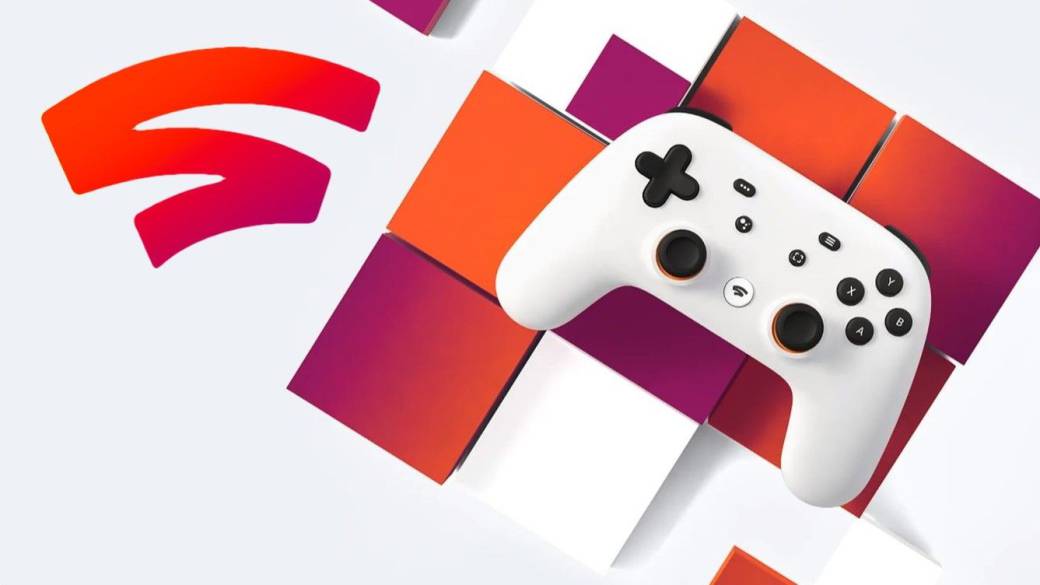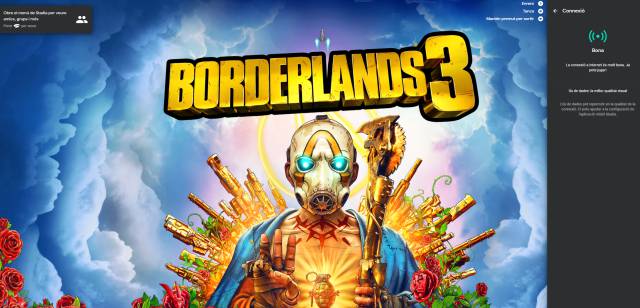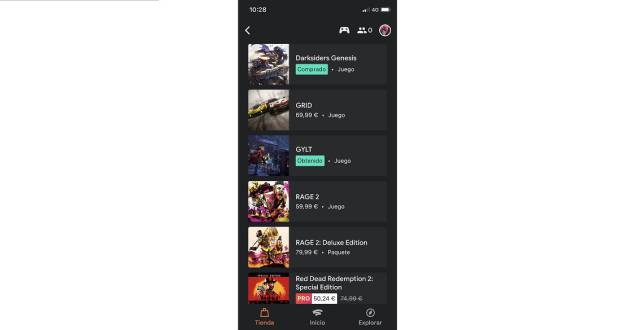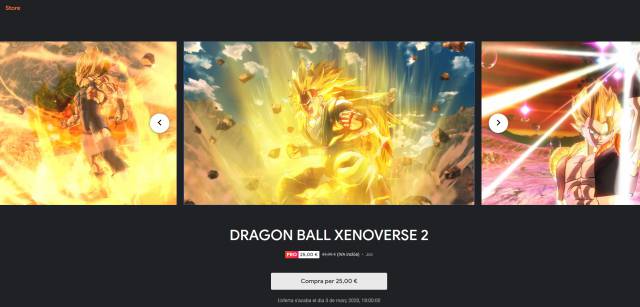
We thoroughly test the bet on the Google streaming game
Google Stadia burst with some force when it was announced months ago. The new game platform of the American giant wanted to gain a foothold in the world of videogames by simplifying things: a command and little else. Play where we would like with any device, because as we are seeing in many of the current proposals, there are more and more companies that do not care how we play their things, but that we do it. And that can be transferred to Microsoft and its commitment to the Game Pass, XCloud and an Xbox Series X exit that will not split exclusive games with One for a simple reason: Microsoft does not want anyone behind, on the contrary. You want the largest number of people subscribed to your products.
Stadia has a bet, within its field, similar. This streaming platform does not matter – with nuances – what brand of mobile, tablet or TV you have. He doesn't care if you have a next-generation PC or a device that needs to be renewed. He wants you to play whenever you want, wherever you want, without intermediaries. No specific hardware Gets it?
Commissioning and first measures
The Stadia Founder’s Edition pack, which we have been able to play for several days, comes with the right thing. A remote control that can be connected via USB-C or without cables, a ChromeCast Ultra to connect directly with hdmi and two chargers, one for ChromeCast itself, with ethernet cable input, and the remote control. It does not require more and is an ode to simplicity that you want to move with Stadia. Google insisted that Stadia and immediacy be synonymous, although at least in the first connection measures it is not.

Once we have our gadget connected to one of the compatible devices, you have to configure it. For this we will need a mobile app, Google Home, from where a space is created in which familiar devices are found, such as ChromeCast Ultra itself. It is through mobile and not directly from what Stadia brings us that we must configure, update and link the remote to play on screen. It is not a cumbersome process, but less intuitive than it could be assumed. With more or less setbacks – if you have ChromeCast connected via Ethernet because in the room where WiFi does not arrive, you will have to go with the mobile and control where there is WiFi because it is necessary to link it in this way – we end up having the platform available.
The other way to play that we have been able to try is via a web browser from our PC. As simple as connecting to stadia.google.com and from there, with the remote connected with cable to the computer, use everything we have available to buy and to test the games we want. Of course, once we had created our profile via app.
The app's dependency
In fact, one of its great setbacks is this dependence with the app that makes the experience not from you to you: screen and command, with nothing else. If we play with the browser this is reduced because all the functions are available on the Stadia website, where we play, but from any other device we need the mobile intermediary. Without going any further, even when we take screenshots, the remote has a button for this, they are saved directly to the mobile application. We do not have access from the browser … Nor can we download them from the app. Nor see them horizontally. A meaningless What's the point of having captures in an app without being able to get them out of there?

The Google Stadia remote
When we finally received the Founder’s Edition and before we could connect anything, something that caught our attention is the command. It has a design that reminds and much in command of Nintendo Switch, a comparison that we do not do by chance. The arrangement of the joysticks, yes, in Stadia they are like those of the Dualshock, giving priority to the crosshead. The controller weighs more than the Nintendo console, but its grip is tremendously comfortable. The rough back part and the size of the sides is ideal to catch it, and the sensations are very good. The design of the joysticks, meanwhile, reminds us in tact to the Xbox sticks. The buttons respond well and we liked the crosshead, allowing to mark diagonals with some ease.
It's time to play: Does it work?
But as they say, we have come here to play. How do games work on this streaming platform? In general, the response is surprisingly positive in terms of latency. We have been able to try three first-person shooters, which are surely the games where we can most notice response problems. Without going any further, at the time when we tested PS Now the control of Killzone 2 was simply unplayable, with an obvious delay between what we were aiming at and what we saw on the screen. We have not had these problems here.

Sometimes, when we move the camera or do some action we may have the feeling that there is a minimum delay or that we do not have an answer as fast as its original versions, but the truth is that in Destiny 2, Borderlands 3 and Metro: Exodus we have not had no problem when aiming at the head, shoot right and left or fail because of the platform. On the contrary, everything went well and satisfactorily. It is true that we talk about campaigns, and that it would be necessary to see how this translates into fast multiplayer as a Call of Duty, without going any further, but at least to play the campaigns of the mentioned games we have not had problems with the response, nor playing from browser or from Chromecast Ultra.
We say the same in adventure games that we have been able to try. Gylt, the exclusive title of Tequila Works for Stadia, also has no control or response problems, although in this sense it is much more leisurely. Assassin's Creed: Odyssey has a convincing answer. It is not the title that requires a more immediate reaction in the control, but we have made blocks and parries at the right time without missing a lack of response between the command and what we see on the screen. In short, what is one of the main points of doubt of the streaming game, at least in what we have played, works well. On mobile devices and via Wi-Fi, when we can see it – at home we do not have compatible devices at the moment – we will know if this fidelity is maintained. We have not been able to try any of the fighting games, where the delay, however small, can be decisive when making combos of 1-3 frames and more if we have to add the online game against other players.
Away from the promised 4K
Where there is less reason for joy is in the resolution and overall quality of the image. None of the games are shown at a quality level like their homonyms have on consoles at the level of detail. And this is due more to the compression of the stream than to the quality of the game itself. When we see the captures we have made (in the app), there is a level of definition and detail that is not what we have when we play. It happens to him as in streams of games on platforms, which, however much resolution they mark (or those videos at 2k from YouTube), the reality is that bitrate does not show up with the fidelity of the real one. And that is in all the titles: when there is black color, there are obvious mismatches with those classic squares of a stream, and also easily blurred elements. On the one hand, we have no doubt that playing it like this on a mobile phone, wherever we want, has the power it has, it can be enough and a plus, but in browser, in chromecast ultra with a 4K TV and with cable connection is not what was promised .

Where we had some setback is in Gylt and Borderlands 3, which despite indicating that the connection allowed the best visual quality, from browser we have had some framerate drops. In the other games, even with loading items on the screen like Destiny 2, it has not happened to us.
One of the promises of the Pro version, which is worth 9.99 euros per month, is the experience of being able to play 4K compared to other versions that are not yet available, but the result is not yet expected, although it remains a Overall satisfactory experience when playing it.
Business model and outstanding absences

Google Stadia has a base that is not negligible and offers surprising experiences. Being able to play Borderlands 3 via streaming with that answer is already a step forward to keep in mind. Doing it the way it is done: you acquire the game, give it to the play and play without any installation, it is also a point in favor. But the business model and the catalog, for now, are its least attractive aspects after several months in the market. Having a subscription of 9.99 euros per month for what is offered at the moment knows little: access to offers of various titles (Red Dead Redemption standard now at 48 euros) and free games such as Destiny 2, Gylt, Metro Exodus, Farming Simulator 19 Platinum Edition and Metro Exodus today. The model based on a traditional store and a subscription with few incentives we are sure will not be the one you will have in a while. Game Pass offers more than 100 games, and new releases, for the same price. The starting price of the games in Stadia has no competitive advantages over other platforms, and there have been problems because the available versions were not the most updated.
When the free version of the platform arrives, let's see its performance and staging on the screen, we can better calibrate where the shots go. This version does not have free Pro games or access to 4K (1080p is the maximum), so it can mean two things: the obvious improvement of the games offered for free for the paid version, the visual improvement of the version of payment … And an access from wherever we want simply by buying the games that, when there are interesting offers, can make a difference compared to other platforms.
Stadia arrives with several more absences. The theme of the screenshots is one of those who cry out to heaven. The pace of news is also not being the brightest possible: the most recent additions are Supercross 3, which is from this 2020, but the three versions of Ghost Recon Breakpoint, Borderlands 3 and Dragon Ball Xenoverse 2 follow. Also missing are functions of sharing games with other users, a community environment like other platforms, parental control or compatibility with many brands and important devices in the mobile market. Nor does it help a communication policy with too many absences and delays in responding to problems in the community, something that should be improved to retain the public.
conclusion
Google Stadia is an experience that, in its main essence, to be able to play without a PC or console intermediary, convinces. And it does so with a latency response rather than surprising, at least for what is the single player or cooperative game (for competitive proposals we must wait to see it in detail). Play from browser or ChromeCast Ultra with the remote and nothing else is immediate and has a good performance. But that's where their virtues stop. The experience at the resolution level is not the one promised, and it shows in streaming, even if it fulfills its mission. To which is added that we have had some setbacks of framerate falls in games like Gylt and Borderlands 3 from browser.
The system, which depends a lot on the mobile app, also becomes somewhat less intuitive than expected for that reason, and you need to manage any item directly from ChromeCast. The absences of functions, the little prolific catalog and the business model with paid subscription and games at the price of exit news – there are offers today, yes – it also raises doubts.
In short, Stadia promised the game of the future, but everything that involves the gaming experience – which is not perfect but surprising in response – is in a rethinking phase. The free version, the catalog expansion and exclusives and the price of the same will end up dictating what hole the market gives Stadia. Its great attraction, today, is to be able to play without a console or PC in the middle and from wherever we want. Something that has its limitations while compatible devices are growing, but that is the case with ChromeCast Ultra, browser and several smartphones / tablets already. Is that enough? Surely not, but having the base, it is evident where to improve so that Stadia is the real alternative that it pretends to be.

